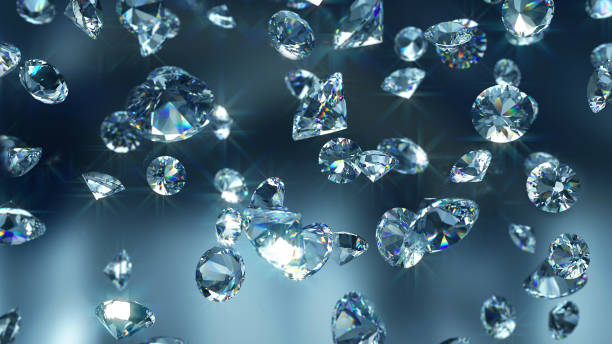Inside the World of Fine Colored Stones All Entries

The value of a gemstone mostly comes down to rarity, durability and appearance. Color helps determine the beauty, especially for fine colored stones. Understanding how color affects a stone's appearance and the wide variety of colors available for designing special jewelry will help you decide what to give someone for a memorable gift comprised of fine colored stones.
Inside the World of Gem Colors
Even though there are only six fundamental "rainbow colors" of the spectrum (red, orange, yellow, green, blue, violet), the total number of hues that shape our environment is infinite. Some people consider indigo to be a seventh spectral color, based on the color wheel developed by Sir Isaac Newton hundreds of years ago. But the actual amount of visual colors mixes with a continuous spectrum, which is why in reality, there are infinite colors.
The human eye can only perceive certain distinct colors in which light sources play an important role. That's why some gemstones appear to change colors under different light sources. Mixing in grayscale colors (white, gray, black) broadens the number of selections. Prisms, which split light, add a further dimension to gemstone colors. The three primary factors that affect gemstone colors are mineral material, the type of illumination, and the human eye.
Despite all the different colors in the universe, people tend to be attracted to certain shades that are perceived as more beautiful than others. Vibrant effects stand out better than what appears to look dull. Visual patterns of gemstones also make a difference in evaluating appearance. When a jeweler talks about "colored stones," they are referring to any gem species besides a diamond, since colorless diamonds are the most valuable. But diamonds come in many colors as well, based on impurities, so some people include them in the discussion.
Beauty of Multicolored Stones
Adding to the diverse variety of gemstones on Earth is the blending of colors, such as blue mixed with blue-green. The crystalline structure of most gems affects symmetry, which creates further diversity among fine colored stones. Fine crystals are very impressive in how they affect color perception, which is one of the reasons they're so expensive.
Known as the "rainbow gemstone," Tourmaline is an example of a stone that commands deep respect and fascination due to its diversity and multicolored effects. Part of its color diversity has to do with how the stone is held in relation to a light source, as different angles yield different effects in terms of intensity.
With Tourmaline, individual crystals can have their own unique color, creating an interesting design. Watermelon Tourmaline is an example of the gem's diversity, as it displays pink surrounded by green. Some of the many different varieties of Tourmaline based on color include Dravite (brown), Elbaite (green), Indigolite (blue), Rubellite (pink or red), Siberite (purple) and Verdelite (green).
The world of fine colored stones goes well beyond Tourmaline. It includes varieties of Apatite, Sapphire, Chrysoberyl, Tsavorite and Zircon. Crispness and clarity add to color effects, especially among the selection of fancy color gems.
Conclusion
The beauty of fine colored stones goes a long way in making someone feel special when it comes to jewelry gifts. Contact us at Ralph Mueller & Associates for more information about fine colored stones and other types of amazing jewelry.